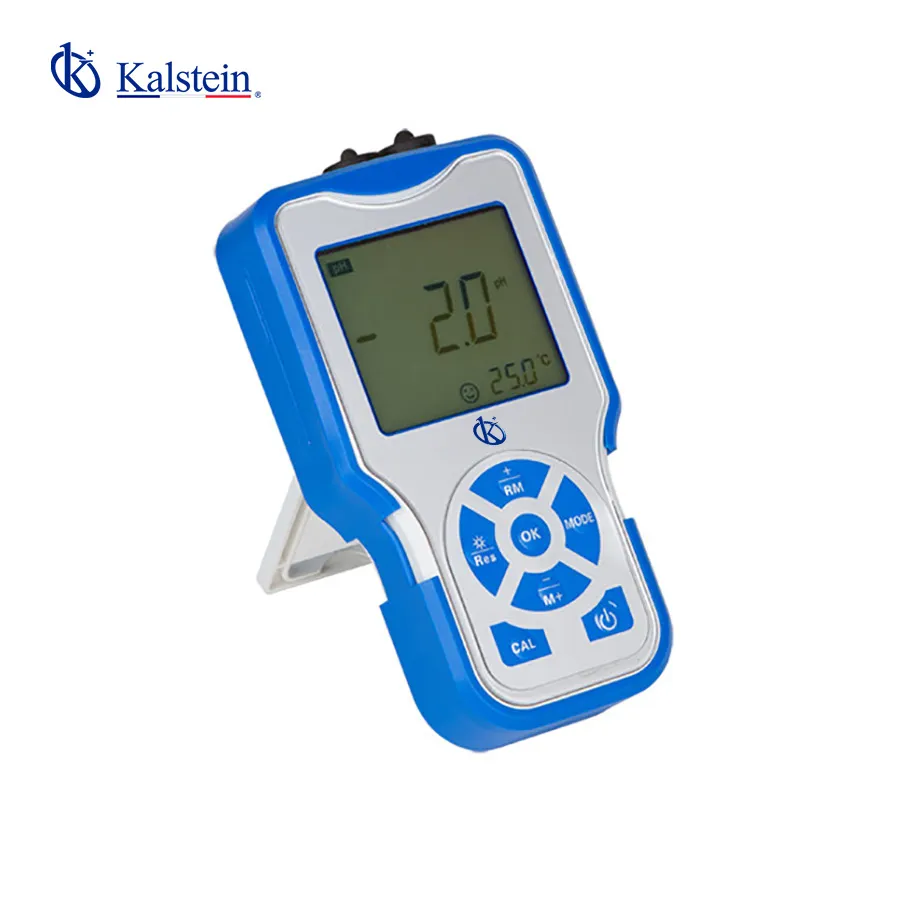Today, ion meters have become essential tools in laboratory research and advanced medical technology. Their precision and efficiency lead to improved clinical results and accurate diagnostics. This article provides a detailed guide on how to use an ion meter to achieve the best results, including practical tips and step-by-step tutorials.
If you wish to explore the high-end product catalog we have for you at KALSTEIN, visit us at https://kalstein.de/category-product/laboratory-line/ion-meter/. We assure you that through our easy and feasible online purchasing channels, you will find the best prices in the market. We remind you that at KALSTEIN, we manufacture high-level laboratory equipment for sale. https://kalstein.de/
Introduction to the Ion Meter
The ion meter is a fundamental device in many research laboratories and advanced medical applications. This instrument allows for the precise measurement of specific ion concentrations in various solutions, which is crucial for a wide range of studies and practical applications. From academic research to clinical testing, its use is indispensable for obtaining reliable and repeatable data.
The technology behind ion meters has significantly evolved, incorporating recent advances in laboratory research that allow for greater accuracy and ease of use. In this context, it is essential to understand its basic operation and best practices to ensure optimal results in every measurement.
Initial Setup and Calibration
Before using an ion meter, it is crucial to perform proper initial setup and accurate calibration. Calibration is the process by which the device is adjusted to provide precise readings by comparing it with known standards. To begin, ensure you have fresh, high-quality calibration solutions, as the accuracy of the calibration largely depends on these solutions.
To calibrate the meter, follow these steps:
1. Turn on the device and allow it to stabilize according to the manufacturer’s instructions.
2. Immerse the electrode in the lowest concentration calibration solution and adjust the device as indicated.
3. Repeat the process with solutions of increasing concentrations, rinsing the electrode with distilled water between each solution to avoid cross-contamination.
Sample Preparation
Sample preparation is a crucial step for obtaining accurate and reproducible results with an ion meter. Samples must be free of contaminants that could interfere with readings, which involves following a strict protocol for cleaning and handling. Use clean containers and ensure all tools are properly sterilized.
Additionally, it is important to adjust the pH of samples when necessary, as ion concentrations can be affected by changes in pH. Use pH buffers and adjust carefully until the desired level is reached. This step is especially important in medical and research applications where precision is critical.
Measurement Procedure
Once the meter is calibrated and samples are prepared, it’s time to proceed with the measurement. Follow these steps to ensure accuracy in your results:
1. Insert the electrode into the sample, ensuring it is fully submerged.
2. Wait for the reading to stabilize, which may take a few minutes depending on the sample and type of meter.
3. Record the reading and repeat the process with any other samples you need to analyze.
It is essential to rinse the electrode with distilled water between each sample to prevent cross-contamination. Additionally, store the electrode in an appropriate solution when not in use to prolong its lifespan and maintain its accuracy.
Maintenance and Troubleshooting Common Issues
Regular maintenance of the ion meter is crucial for ensuring optimal performance and prolonging its lifespan. This includes regular cleaning of the electrode and storing it under appropriate conditions. Most ion meters come with specific manufacturer recommendations on how to maintain the electrode and the device in general.
If you experience issues such as unstable or inconsistent readings, check the following points:
1. Ensure the electrode is clean and undamaged.
2. Review the calibration and recalibrate if necessary.
3. Ensure that calibration solutions and samples are not contaminated.
Practical Applications and Usage Examples
Ion meters have a wide range of practical applications in various fields. In laboratory research, they are used for studies in chemistry, biology, and environmental sciences, allowing for the precise measurement of ions in aqueous solutions and other media. In the medical industry, they are used to monitor and analyze electrolyte concentrations in body fluids, which is vital for diagnosing and treating various medical conditions.
A practical example of their use is in monitoring water quality. Measuring levels of ions such as chloride, sodium, and calcium is essential to ensure that water is safe for consumption and industrial use. Another example is in the pharmaceutical manufacturing process, where precision in ion concentration can affect the efficacy and safety of the final product.
Ion meters are essential tools in advanced medical technology and laboratory research, enabling precise and reliable results. By following the steps detailed in this guide, from initial setup and calibration to sample preparation and maintenance, you can ensure the best possible results. Additionally, by staying informed about the latest trends and advancements in this field, you can optimize your use of ion meters and contribute significantly to your research projects and practical applications.

